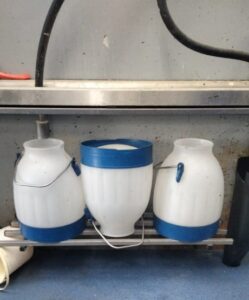Tip of the Month – Februar 2023
Is the milk permission still good?
The automatic milking permission also needs to be adjusted from time to time, for example if the production per cow or the number of cows per robot has increased.
Is the milking permission still good and do all normal cows have a check mark?
You can check whether they are all checked by selecting all cows in the status screen via Contrl + A and then choosing VMS Animal data and checking the 2nd tab Milk permission to see if they are all checked. Special cows may have a special (different) attitude.
You can check whether the Automatic Milk Permission is correct by sorting on expected milk yield in the Status screen and then checking which cows currently have and which do not have milk permission? Does this fit your plan?
And don’t too many cows have milk permission so that the cows that don’t come smoothly also have to wait for cows that only just get milk permission again with smaller milk yields and get demotivated by these cows and so bring down the capacity of the robots and your cows?
It is normal when no more than 25% of the cows have permission to milk.
 Get in the habit of cleaning the jugs that are not being used and simply place them
Get in the habit of cleaning the jugs that are not being used and simply place them